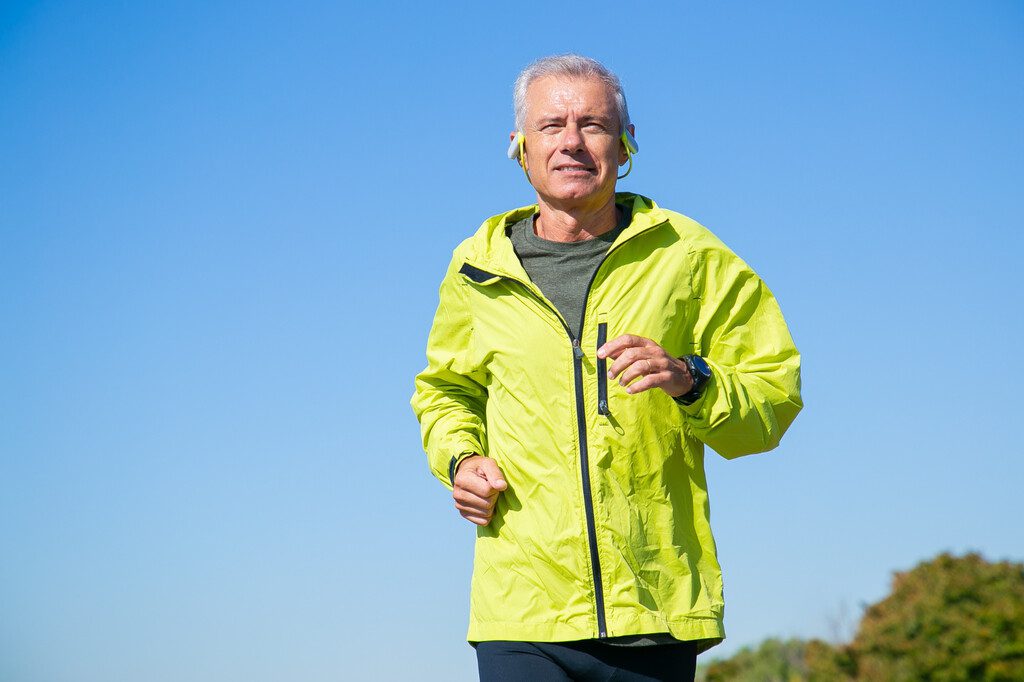Table of Contents Show
✍️ AI is summarizing:
As people get older, starting a running routine can provide great health benefits, but it’s important to take the proper precautions. The article provides 4 key tips for older runners who want to take up running.
Related post:
- Top 10 Trail Running Guide for Beginners
- Maximizing and Recovery of Running Performance and Glute Strength
- Unveiling the Top 5 Scenic Routes For Cycling In Vietnam
1st tip for older runners: choose the right running location

Older runners may not lift their feet as high as younger runners, increasing the risk of tripping on uneven surfaces like cracks in the sidewalk or holes in the grass. The article recommends running on a paved trail in a park or on a high school track, where the surface is smoother and safer. If running on the street, run facing traffic so you can see oncoming vehicles and get out of the way if needed.
2nd tip for older runners: Be aware of your surroundings
Older runners need to be extra vigilant, as their eyesight and hearing may not be as sharp. Avoid wearing headphones that could prevent you from hearing approaching traffic. Wear reflective gear if running at night. Consider running with a partner or group for added safety and companionship.
3rd tip for older runners: Start slow and listen to your body

After a long period of inactivity, older bodies will need time to build up strength and endurance. The article advises starting with walking for 30 minutes before transitioning to a walk-run routine. Gradually increase the running portion over time. Pay attention to soreness and stop if you experience any sudden, sharp pain, as that could indicate an injury.
4th tip for older runners: Choose the right shoes
Proper running shoes are essential at any age, but especially for older runners. Look for shoes that are at least a half-size larger than your normal shoes to accommodate foot swelling during runs. More cushioning may be beneficial, but the most important factor is finding a shoe that fits your feet well. Don’t hesitate to visit a specialty running store for expert advice on the right shoe for your needs, even if the cost is higher than what you’d find at a general retailer.
Beyond these general tips, the ExoTrails app offers a tailored solution for older runners. Its intuitive interface makes it easy for anyone to use, and the built-in community provides a supportive network. By sharing experiences and encouraging one another, users can stay motivated and maintain a consistent running routine.
Conclusion
By following these 4 tips, older runners can safely take up running and enjoy the many physical and mental health benefits it provides. The article emphasizes the importance of easing into a running routine, choosing the right equipment and environments, and listening to your body to avoid injuries and stay active later in life. Follow us on Facebook to connect with others and receive valuable information.












Your point of view caught my eye and was very interesting. Thanks. I have a question for you.
I don’t think the title of your article matches the content lol. Just kidding, mainly because I had some doubts after reading the article.
Thanks for sharing. I read many of your blog posts, cool, your blog is very good.
Thank you for your sharing. I am worried that I lack creative ideas. It is your article that makes me full of hope. Thank you. But, I have a question, can you help me? Binance注册
Can you be more specific about the content of your article? After reading it, I still have some doubts. Hope you can help me. 最佳gate推荐代码